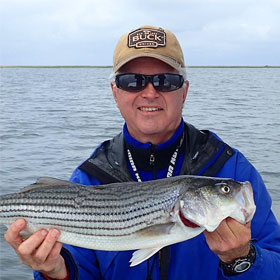11 Expert Tips for Freshwater Kayak Fishing Success
By Ken Schultz
Sep 16, 2021
From what to do before and just after launching to what to do on the water, here are a dozen practical freshwater kayak fishing practices you’ll want to adopt
When I wrote the first article about freshwater kayak fishing that was ever published in a national magazine (Field & Stream, October 2000), the sport was in its infancy and I was only a year into freshwater kayak fishing. More than two decades later, saltwater and freshwater kayak fishing have boomed and I’ve traversed a lot of water with a kayak, paddle, and fishing rod.
Here are my top freshwater kayak fishing tips, assuming that you’ve already mastered paddling technique, boating safety issues, gear setup, and the like.
1. Have a Checklist.
A checklist that you review before leaving home helps ensure that nothing essential is forgotten.
2. Have a Plan.
It takes a while to get places in a kayak, so you should maximize your time. Think about where you’ll launch given the weather and wind conditions, where you need to get to, where other freshwater fishing boats will be, etc. Don’t forget to plan for the return to your launch site.
3. Get Organized Immediately.
Before the first cast, get organized by having fish gripper, pliers, camera, and other gear exactly where you need them and ready to be utilized.
4. Troll From Place to Place.
Always troll at least one line while you paddle or pedal from place to place. Bonus freshwater kayak fishing success!
5. Use Wind/Current Advantageously.
Pedal and motorized kayaks evolved to increase boat control and keep hands free for fishing. Without either, you have to position yourself to drift advantageously at a fishable pace. You can’t be effective if you’re constantly being pushed away from the target fishing area and doing more paddling than casting. You must control your drift.
6. Anchor Up. When wind or current hamper positioning, anchor up.
Use a light grapnel or plow (claw) anchor on a rope for deep water. For shallow water, an 8-foot stake anchor works well, especially on soft bottoms. (I repurposed a pushpole and attached a handle and small lanyard/clip to tether it to my kayak.)
7. Back Into the Bank or Clip Onto a Limb.
Lacking an anchor, or if you’ll only be in a spot briefly, you can back the kayak stern into a soft shallow bank, bush, or marsh to stay in one place for a short time (watch your rods and raise the rudder), and fish outward. If you have a short flex cable attached to a brush gripper, you can grab onto a bush/limb/stump/piling.
8. Be Thorough.
If you’re casting, work a good location thoroughly, especially if you’ve caught something. Use different lures and retrieves and cover everything in casting range.
9. Be Stealthy.
Kayaks are especially useful in shallow environs, where fish are necessarily wary. Don’t knock the kayak with your paddle or other gear, shift equipment around, or do anything to create vibrations. You can get surprisingly close to fish if you move slowly and quietly.
10. Keep the Rod Tip Low.
Especially if you’re sitting down, as many kayakers are. This minimizes the effect of wind when casting, aids accuracy, and enables more impactful hooksets.
11. Paddle with One Hand/Arm.
This is useful to steer away from obstacles or keep out of current while battling a fish. Align your forearm along the paddle shaft to make short adjustments to the kayak while holding a rod in your other hand, similar to using a canoe paddle. It’s awkward with a double-ended paddle, however. You can also separate a two-piece straight-shaft paddle and use one segment for minor positioning and movements. Old-time bayou fishermen used stubby paddles to one-handedly maneuver their pirogues around while dapping long cane poles ahead of them with the other. You might consider having an auxiliary 18- to 24-inch paddle.









